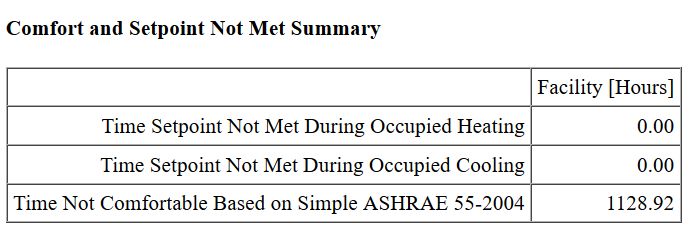First time here? Check out the Help page!
 | 1 | initial version |
(1) COMPLETENESS After discovering that not all HVAC components had been installed yet and adding missing components, amount of unmet hours was reduced.
(2) CONSISTENCY temperature setpoints, and temperature schedules must be consistent, and temperature differences between in- and outflows must be adequate to enable the system to provide sufficient heating and cooling power.
(3) VOLATILITY AND INERTIA Source of highly dynamic change may be solar radiation, or EMS controls, while the building and the HVAC system may react with inertia. Performance can be improved e.g. by dynamic shading to avoid extremes from solar radiation gains, by switching to dynamic (EMS controlled) natural ventilation (infiltration), and by programming EMS controls with hystereses in the ON-OFF criteria.
(4) CONVERGENCE AND ERRORS convergence problems (e.g. due to highly dynamic changes in some zones or HVAC components) may lead to increased unmet hours results, which partly may be eliminated by steps under paragraph (3). In one case it was possible to eliminate a convergence problem by increasing thermal mass of affected zone(s) by cross-mixing, which anyway were not truely separated in reality, (in EnergyPlus separated only by "air wall") but together constituted a non-convex thermal zone. Checking (severe) error messages may also help to improve performance.
(5) NECESSITY It was found that not for all zones the same heating and cooling setpoints need to apply. Relaxing e.g. the cooling setpoint for a bathroom (which essentially did not need cooling), finally produced the desired result: ZERO unmet hours during occupied hours.

